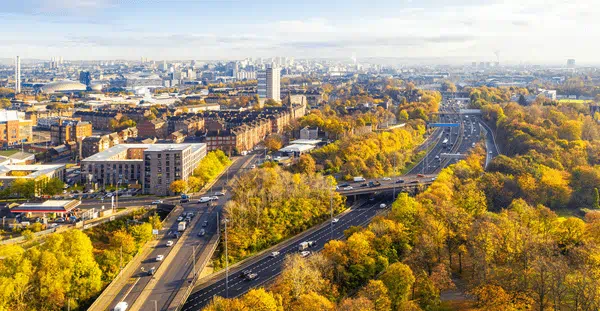When it comes to combating climate change, we find ourselves at a crossroad. Are we truly ready to abandon the hope of avoiding catastrophic impacts by curtailing global warming to 1.5 degrees? And regardless of how we answer that question, are we doing enough to prepare for the impacts we are already facing?
We are facing an enormous challenge, and there is a dangerous likelihood that at this rate, we won’t achieve the Paris Climate Agreement goals. But we also know that if we admit defeat now, we’ll be in a much worse position in 2030 – and 2050. Every fraction of a degree counts, so we should be doing everything we can to try to reach this goal, despite the long odds.
So, what needs to happen to give us a chance to not exceed 1.5 degrees of global warming and what role does the engineering sector need to play in making this possible? At Arcadis, we have a clear message on this front. We know what we need to do and where we need to do it – the next step is the how. To catalyse real progress on climate action, we need much better data about the sustainability performances of our cities, because each city has its own unique sustainability challenges to overcome.
Only custom-tailored approaches can help cities take advantage of unique opportunities to mitigate climate change in their local geography and help their citizens adapt to the unique challenges climate change will bring them.
Take for example the Arcadis Sustainable Cities Index 2022 (SCI). Ranking 100 of the world’s leading cities, the SCI examines cities across three pillars of sustainability – Planet, People and Profit. And although each pillar is weighted equally, we see from the SCI findings that a city can be dominant within a pillar, but still falls in the overall ranking. It is the combination of each pillar that determines how well a city performs overall. This proves that a granular level of data on cities is necessary to create practical action in cities to combat climate change.
Though all three factors are weighted equally in the rankings, an intriguing result is the fact that the data shows that putting the Planet and People first is a more reliable road to prosperity than putting Profit first, as long as there is some profit to finance the necessary progress. Of the 20 cities at the top of the SCI, seven rank in the top ten for Planet and three rank in the top ten for People. The lesson we can take away is that focusing on planet and people solutions can lead to economic payoff and growth, preparing a city to succeed in rising sustainable economies of the future.
Glasgow leading the way
We can be proud that Glasgow scores a very impressive 13th in the overall SCI, behind only London in the UK, beating many other English cities in not just one but all pillars. The stand-out strength for Glasgow is the People pillar where it is the world leader. It’s also among the most affordable cities in the developed world, even more so than several Chinese cities.
People pillar
Glasgow’s impressive performance in the People pillar is built on a very high performance across the board, from amenities such as transport, internet, education and healthcare through to its healthy work-life balance. The only clear challenge that the SCI picks up in the People pillar is around income inequality which is an area that requires focused attention. Here, Glasgow’s peers are cities such as Lagos and Bangkok, but also Rome and Wellington.
Transport and infrastructure
Glasgow’s transport infrastructure is comparable to many other UK cities and suffers exactly the same challenges – its sustainability lags behind London. Its connectivity is also in the lower half of the SCI, above Leeds and Birmingham, but far below London and on a par with Sao Paulo or Buenos Aires.
Energy and environment
Glasgow has clean air, plenty of green spaces, excellent waste management and low environmental exposure. However, its energy mix, energy efficiency and greenhouse gas emissions are all critically important areas where investment is needed. Glasgow and Edinburgh are joint bottom of the SCI table of UK cities when it comes to greenhouse gases.
Cleanest air in Edinburgh
Edinburgh is another city that ranks well across the whole index with top 20 scores in both Planet and People. It places a very commendable 18th overall – 12th in Europe.
The city’s transport infrastructure is high quality and accessible. But, it does lack sustainability, with particular weaknesses around its ridesharing fleet and bicycle infrastructure which is the worst in the UK. It is, however, Britain’s least congested city.
Energy and environment
Edinburgh has the UK’s cleanest air, its lowest environmental exposure and most accessible green spaces. It does however require significant investment in its energy mix and energy efficiency both of which are notable weaknesses, by UK standards and internationally. That puts its emissions on a par with Macao, and only just above Houston.
We can clearly see that the challenges faced by each city are unique to the region. Two cities with vastly different climates and two very different approaches to becoming sustainable can therefore rank close to each other in the overall SCI ranking, while still having room for improvement in individual pillars. By exploring what each city is doing well, cities can learn from one another and be inspired to find new ways to improve their own performance.
Unlock of the stories of sustainable cities by downloading the Arcadis Sustainable Cities Index 2022.
A version of this article was first published in The Scotsman (credit: National World Publishing Ltd).




